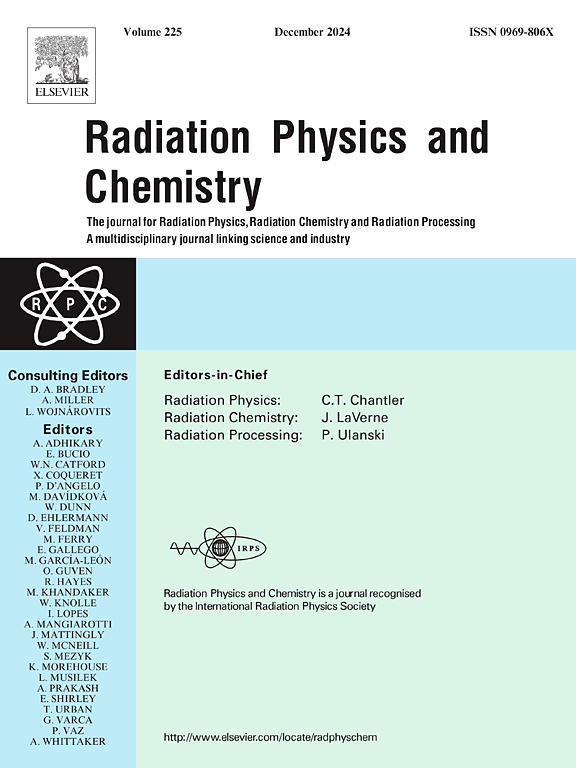Organ Dose Estimation in Pediatric Abdomen and Pelvic Radiographs Using Caldose_X Monte Carlo Simulations
IF 2.8
3区 物理与天体物理
Q3 CHEMISTRY, PHYSICAL
引用次数: 0
Abstract
The growing use of radiological imaging in pediatric care has raised concerns about ionizing radiation exposure, particularly in radiosensitive organs. Children are more vulnerable to stochastic effects such as radiation-induced cancer due to their smaller body size and longer life expectancy. Abdominal and pelvic radiographs are among the most frequently performed examinations in this population, often involving critical organs like the bladder, gonads, and bone marrow. This study aimed to estimate organ doses and associate radiation risk in pediatric abdominal and pelvic radiographs using the Caldose_X software based on Monte Carlo simulations. Examinations were analyzed across five pediatric age groups (0–1, 1–5, 5–10, 10–15, and ≥15 years), with input parameters including incident air kerma (Ka,i), kerma-area product (PKA), and individual anthropometric data. The results showed that the bladder, reproductive organs, intestines, spine, and bone marrow received the highest doses, with absorbed dose increasing progressively with patient age. Significant intra-group variability was also observed, reflecting differences in anatomy, positioning, and collimation. These findings underscore the importance of individualized imaging protocols and support the establishment of age-specific Diagnostic Reference Levels (DRLs).使用Caldose_X蒙特卡罗模拟估算儿科腹部和骨盆x线片的器官剂量
在儿科护理中越来越多地使用放射成像引起了人们对电离辐射暴露的关注,特别是在放射敏感器官中。儿童体型较小,寿命较长,因此更容易受到辐射致癌等随机效应的影响。腹部和骨盆x线片是这一人群中最常进行的检查,通常涉及膀胱、性腺和骨髓等关键器官。本研究旨在使用基于蒙特卡罗模拟的Caldose_X软件估计儿童腹部和骨盆x线片的器官剂量和相关辐射风险。对5个儿童年龄组(0-1岁、1-5岁、5-10岁、10-15岁和≥15岁)的检查结果进行分析,输入参数包括空气风湿(Ka,i)、风湿面积积(PKA)和个体人体测量数据。结果显示,膀胱、生殖器官、肠道、脊柱和骨髓的吸收剂量最高,吸收剂量随患者年龄的增长而逐渐增加。组内差异也很明显,这反映了解剖、定位和准直的差异。这些发现强调了个性化成像方案的重要性,并支持建立年龄特异性诊断参考水平(drl)。
本文章由计算机程序翻译,如有差异,请以英文原文为准。
求助全文
约1分钟内获得全文
求助全文
来源期刊

Radiation Physics and Chemistry
化学-核科学技术
CiteScore
5.60
自引率
17.20%
发文量
574
审稿时长
12 weeks
期刊介绍:
Radiation Physics and Chemistry is a multidisciplinary journal that provides a medium for publication of substantial and original papers, reviews, and short communications which focus on research and developments involving ionizing radiation in radiation physics, radiation chemistry and radiation processing.
The journal aims to publish papers with significance to an international audience, containing substantial novelty and scientific impact. The Editors reserve the rights to reject, with or without external review, papers that do not meet these criteria. This could include papers that are very similar to previous publications, only with changed target substrates, employed materials, analyzed sites and experimental methods, report results without presenting new insights and/or hypothesis testing, or do not focus on the radiation effects.
 求助内容:
求助内容: 应助结果提醒方式:
应助结果提醒方式:


